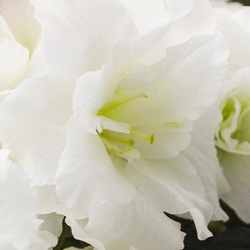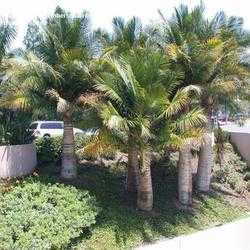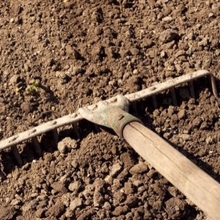Magic is what someone like me, who does not know the science behind the scenes, uses to describe a cause and effect situation. When researching this simple little article on my feelings about rainwater I made the mistake of spending a morning on-line looking up various aspects of rainwater, tap water, water science, chemical characteristics and compositions or various water sources, microbiological research on water resources, skimming through heaps of anecdotal observations, scientific experimentations, expert nurserymen commentaries and fanatical points of view... I realized to my horror (horror mostly at discovering this article might not be such a simple task after all) that rainwater was a huge and complex topic. And for those who want to learn more, I encourage you to do so... elsewhere. This article is going to be a pretty biased, non-scientific, relatively ignorant babble about the 'magical' properties of one of the most amazing and yet overlooked wonders of our garden world- rain.
After killing somewhere around my twentieth palm tree from careless watering on their crowns with my local municipal tap water, I finally began to wonder why these palms didn't suffer the same fate when it rained. For those who do not grow palms, with few exceptions, palms like water, and the more the better. It is really difficult with most palm species to overwater them. But where the water gets on them and particularly what kind of water they get turns out to make a difference. After many years of growing palms in the marginal climate of inland Los Angeles, California, I learned that watering palms with sprinklers that get the entire palm wet was not a good way to go about watering palms. It was wasteful for one thing, but it also got their crowns wet (the top part of the palm where the growing bud or meristem is located). Tap water on the crown of certain kinds of palm at the wrong time of year (when it was not warm) caused an alarming rate of bud rot. Bud rot is a lot like what it sounds- the rotting of the bud or apical meristem of the palm. When I stopped watering this way, I lost no more palms to this annoying condition. After one particularly wet and soggy, cold California winter I began to wonder why all the freezing cold rain that was obviously soaking these sensitive palms' sensitive areas did not cause the same problem. There was obviously something about rainwater that was not like tap water. And that's when I concluded, very unscientifically, that rainwater was magic. For more on watering palms, see my other article.
My observations about the magic of rainwater didn't end there. I also grow a lot of cacti and succulents, which are sometimes difficult plants to keep alive when one is used to watering all plants like I water palms. I quickly (a relative term unfortunately) learned that most if not all succulents and cacti did not appreciate the gallons of water they received while I was also watering my palms and other tropicals. In fact, I think I have killed far more cacti and succulents than I have managed to grow, usually due to some carelessness of mine (overwatering being the number one crime). But I still managed somehow to keep hundreds and hundreds of these little plants alive year after year. And since I do not keep any plants indoors, that means these plants had to survive outdoors in our cold, rainy miserable winters here in southern California. About 85% of all these succulents I planted in the ground, which was a sloggy version of clay, another faux pas in the succulent gardening manuals. Yet amazingly these surviving succulents and cacti performed remarkably well year after year despite some winters being extremely heavy in the rainfall category. And the potted plants did wonderfully, too, despite being waterlogged some of the time with constant rainwater exposure on cold, cloudy days (often below 45F, another ‘cut-off' faux pas in the succulent bibles). After periods of winter drought, when I would sometimes worry these plants were drying out, I would water them with my trusty city water and, to my surprise (still), some would immediately rot. What was different about the rainwater than the tap water? Magic of course.
And another sign of rainwater miracles involved the resurrection of my non-existent lawn, which would miraculously re-appear after a good rain, but struggle in summers after repeated efforts with the hose or sprinklers. And not only did it perk up after a rain soaked the lawn, but it, and many other plants as well, would begin to take on this bizarre color- a deep, vibrant green! Not the yellowy green I had become accustomed to all summer after my watering. New leaves would appear without any brown tipping that I had begun to suspect was just a normal appearance on my plant's leaves. So I began to collect rainwater in large barrels as it ran off the roof or just fell from the clouds. This collected rain water seemed no less miraculous and plants responded to it as though it was full of fertilizer. And if you have ever dipped your hands into a fresh barrel of rainwater, you know there is something going on there as it feels almost luxuriant compared to a bucket of tap or pool water. That is what soft water feels like.
Ok. So I don't really believe in magic, no more than I believe in ghosts, fairly tales or that eggplant can be prepared so that it is palatable. So what is going on here with this amazing liquid from the heavens? What is it about rainwater that tap water doesn't have, or vice versa?
Rainwater it turns out has some things most tap water does not, and most tap water has some things that rainwater does not (aside from a space in its name). As far as I know, all tap water from municipal sources has chlorine in it. Chlorine is a chemical that is very effective at killing bugs and it doesn't take much to achieve this effect. That amount of chlorine keeps our tap water (usually) from having harmful bacteria in it. Rainwater never has chlorine in it. Tap water also often has fluoride in it (added for dental benefits, or sometimes it is already there). Often other minerals exist in tap water, primarily magnesium and calcium, and these waters have varying degrees of ‘hardness or softness' (which basically translates into mineral content, and to some degree, sodium content). Most tap waters are hard (unless they have been purposely softened) and have a large amount of calcium and/or magnesium in them. Usually bottled water does, too (which is why they used to call it mineral water). Tap waters tend to be neutral in pH or slightly alkaline. It is one, several or all of these qualities that make tap water not as good for plants as rainwater.
Rainwater has fewer ingredients in it... or at least less concentrated ingredients. Despite what some may think, rainwater is not pure water. During its flight through space towards earth it accumulates a number of chemicals that get dissolved into it. One of the main chemicals rainwater comes into contact with is carbon dioxide (CO2), which has the effect of acidifying the rainwater. And if there are pollutants in the air, it can be REALLY acidic and you will have what's called acid rain. ‘Normal' rainwater acidity can be very beneficial for plants (though "acid rain" tends to have a bit too much to be good for growing things). Most plant roots like acid water as it makes the minerals more available at the resulting lower pH (lower pH means more acid). That is one of the reasons why things green up after a rain - that accompanying acidity makes nutrients more available in the soil. Another greening characteristic of rainwater is its nitrogen content. Air is mostly nitrogen, so some nitrogenous compounds tend to form in rainwater, and nitrogen is a natural fertilizing nutrient. Rainwater has very few minerals in it at all, but it does tend to have sodium. That is why it feels so soft (it is a soft water). This lack of minerals makes plants that get rained on look extra clean (rain rinses off the mineral deposits on the leaves that tap water left there). It also, if present in large enough quantities (like a deluge) can flush all the accumulated salts (from tap water watering and fertilization) in pots, making the roots that much happier and healthier. The chlorine and fluoride in tap water can be hard on plant cells, causing some necrosis (hence brown-tipping of leaves). None of that stuff in rainwater! Rainwater tends to have a lot of oxygen in it, too, which is another reason why plants like succulents and cacti that get flooded with it seem to tolerate it well (these plants dislike water sometimes because water suffocates their delicate roots... but the more oxygen in the water, the less likely suffocation is to take place). These are the main reasons why rainwater is magical to plants.
Why it is exactly that rainwater does not cause bud rot in my palms, while tap water does, is still not clear, but it probably has something to do with one of the differences listed above. Something about rainwater makes the environment for fungal growth less ideal. Palms have evolved over millions of years to be rained on, so it is not surprising that rainwater does not harm them. It is perhaps more a question of why does tap water harm them? Something in the tap water makes fungal infections more likely. Is it the chlorine? The other minerals and hardness of the water? The lack of oxygen? Either way, there is really something magical about the whole rainwater thing.

















